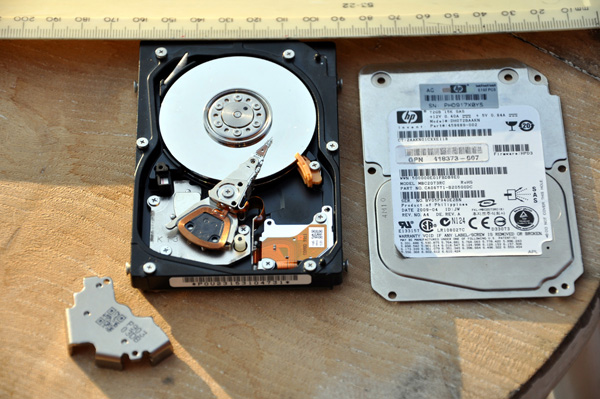
I have a disk drive:-
The cover plate has been removed to expose the disk platters and the actuator arm.
The upper magnet has been removed to expose the copper windings of the voice coil at the bottom and
the tiny read/write head is at the top of the actuator.
The platters spin at 15,000rpm and the head flys very close to the platter surface.
At any given position of the actuator the head flys over a circle (called a track). In the photograph
the head is at the innermost track at a radius of 14mm enclosing an area of 616 sqmm.
The outermost track has a radius of 26mm enclosing an area of 2124 sqmm.
Therefore the recording area is 1508/sq mm.
The capacity of disk drive is 73.5 GBytes and the drive has two platters providing four sufaces
so one surface stores 18.375 GBytes, and since a Byte is 8 bits, one surface stores 147 Gbits.
Therefore the arial density is 147/1508 Gbits/sqmm = 97,500,000 bits/sqmm!
If the bit density around the track is the same as the track density across the disk,
then the density of both is 10,000/mm. This I find incredible, unbelievable, astonishing.
Back to DASD.